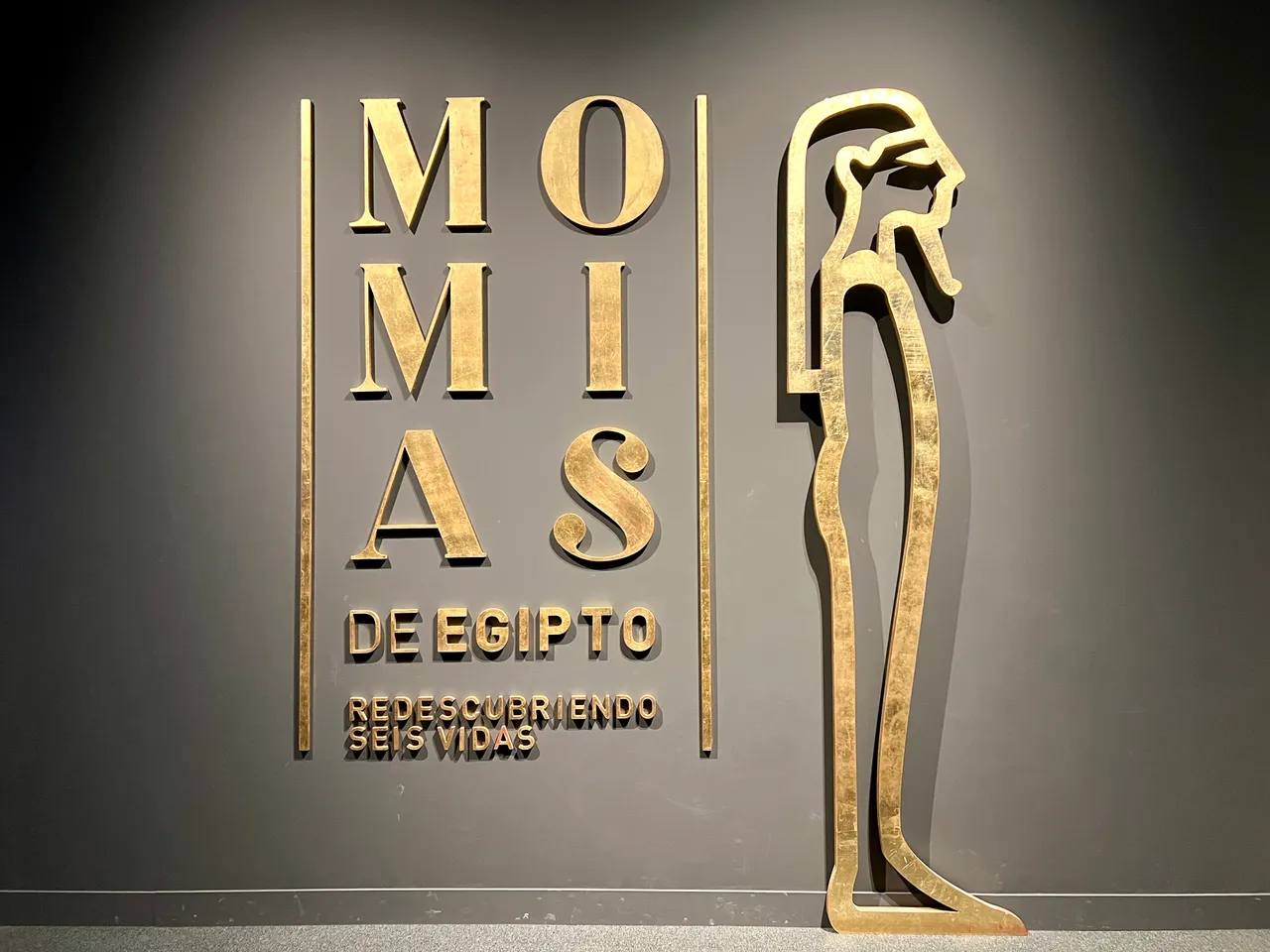

Hola querido hiver.
El Antiguo Egipto es una civilización que muchos admiramos. Desde siempre me han fascinado sus jeroglíficos, los retratos de perfil y, por supuesto... ¡sus momias! Así que, en cuanto supe de la exposición que se desarrollaba en el Museo CaixaForum de mi ciudad, allá que me fui con una amiga a pasar una buena tarde.
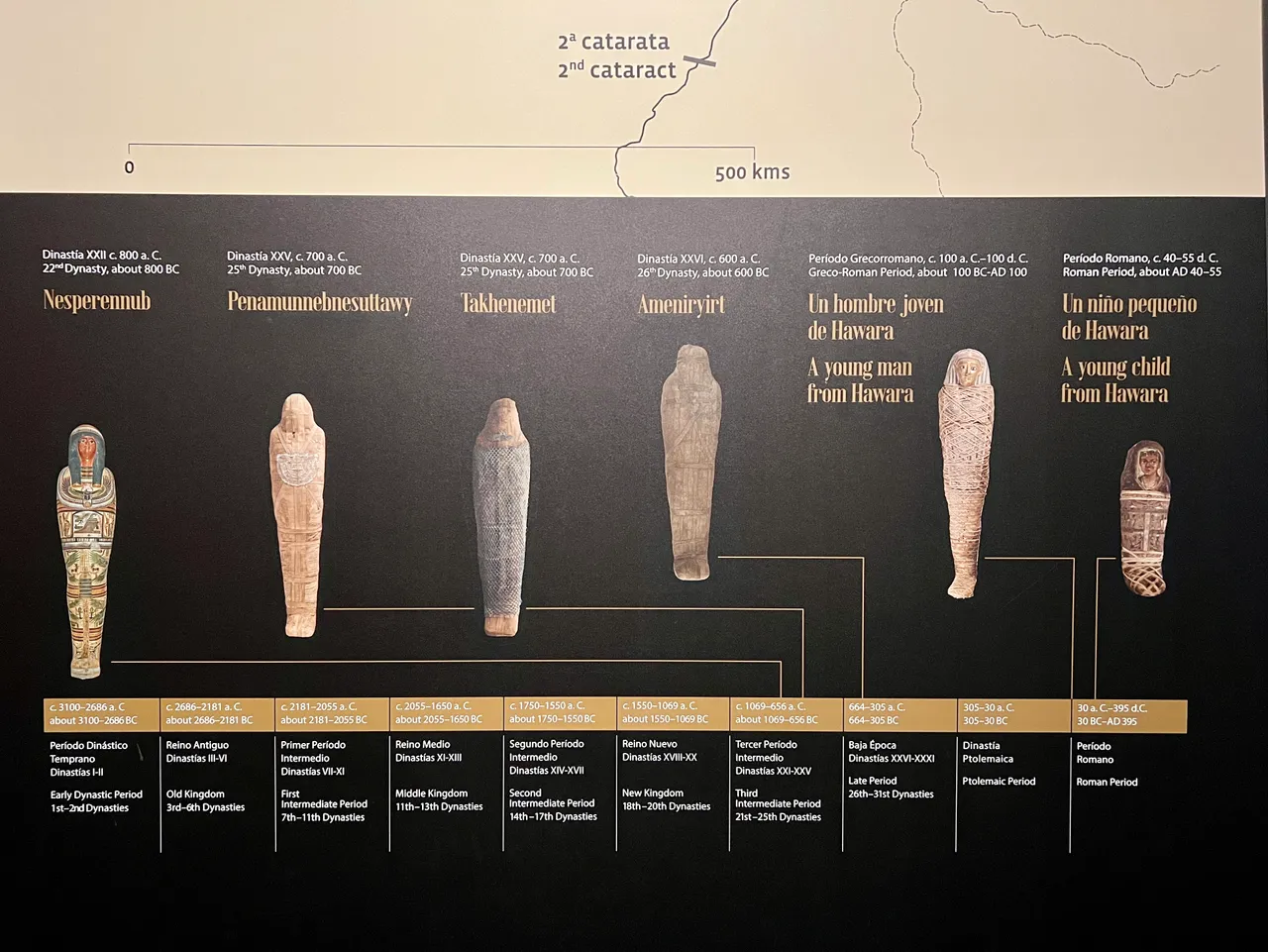
A modo de resumen, esto es lo que veremos: seis cuerpos momificados de distintas épocas y estamentos sociales de la civilización egipcia. Ellos nos sirven de base para aprender sobre sus ritos y costumbres, cómo vivían y hasta de qué enfermaban y morían.
Las piezas son propiedad del British Museum, casi todas eran auténticas y por eso estaban protegidas por cristales. Los datos que aquí presento fueron tomados de los paneles informativos que había a lo largo de todo el recorrido de la exposición.
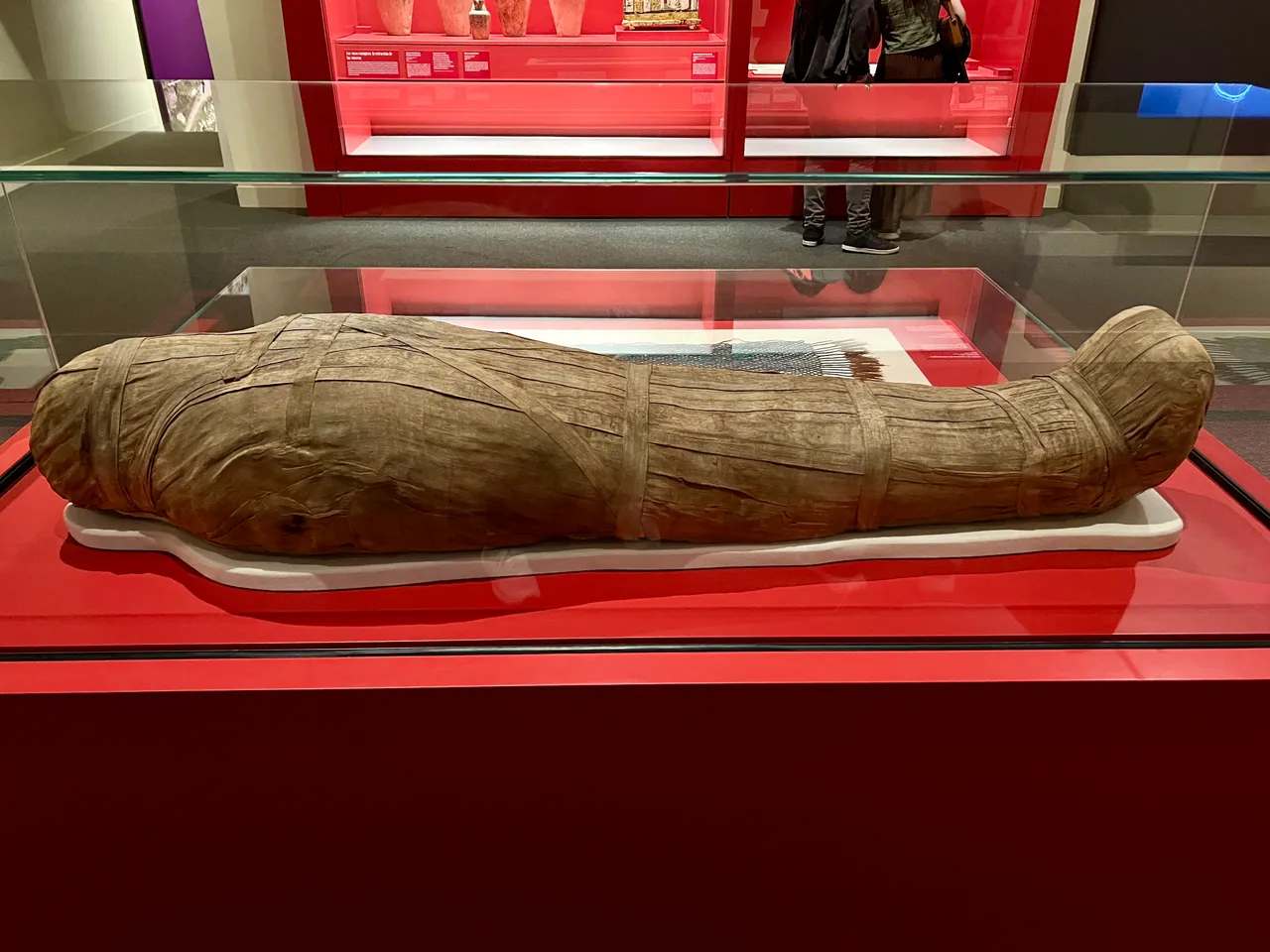
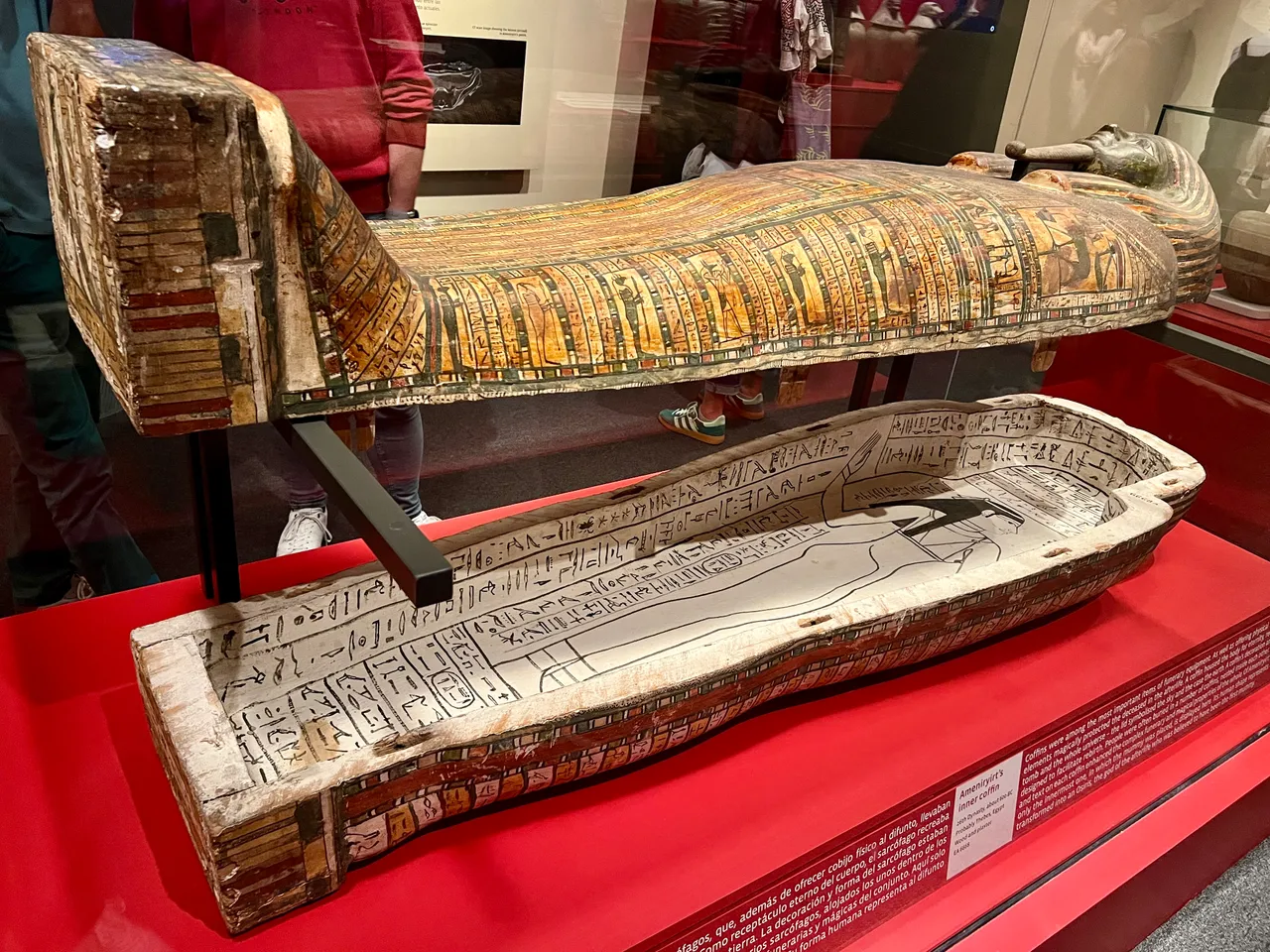
La primera de las momias corresponde a Ameniryirt, un funcionario de Tebas. Esto se sabe por las inscripciones de sus tres sarcófagos, que permiten situarlo en la Dinastía XXVI, alrededor del 600 a.C.
El examen radiológico del cuerpo mediante Tomografía Computerizada (en adelante TC) indica que se mantiene en excelente estado de conservación, por lo que se confirma que se trató de un hombre influyente y perteneciente a las clases altas.
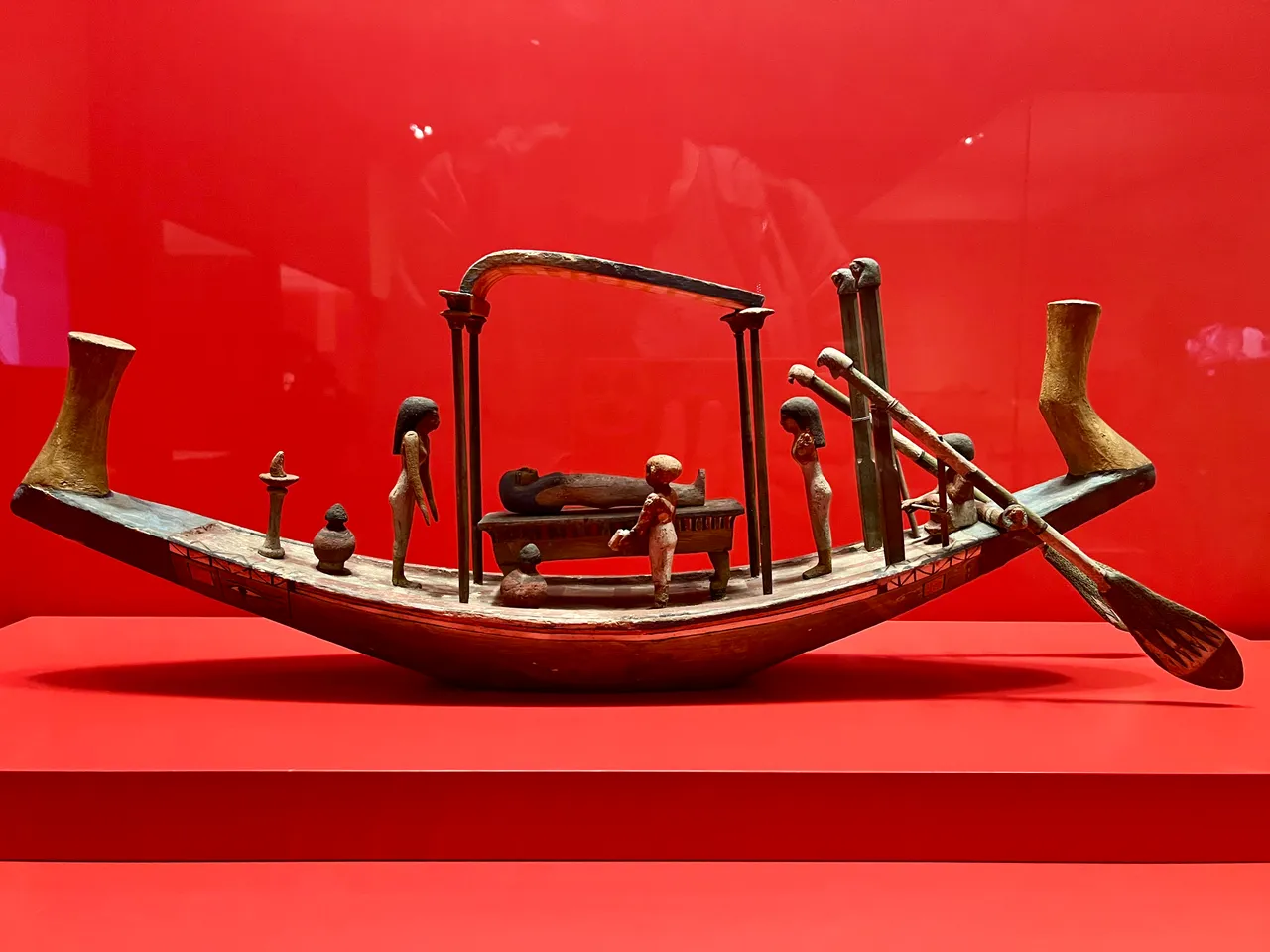
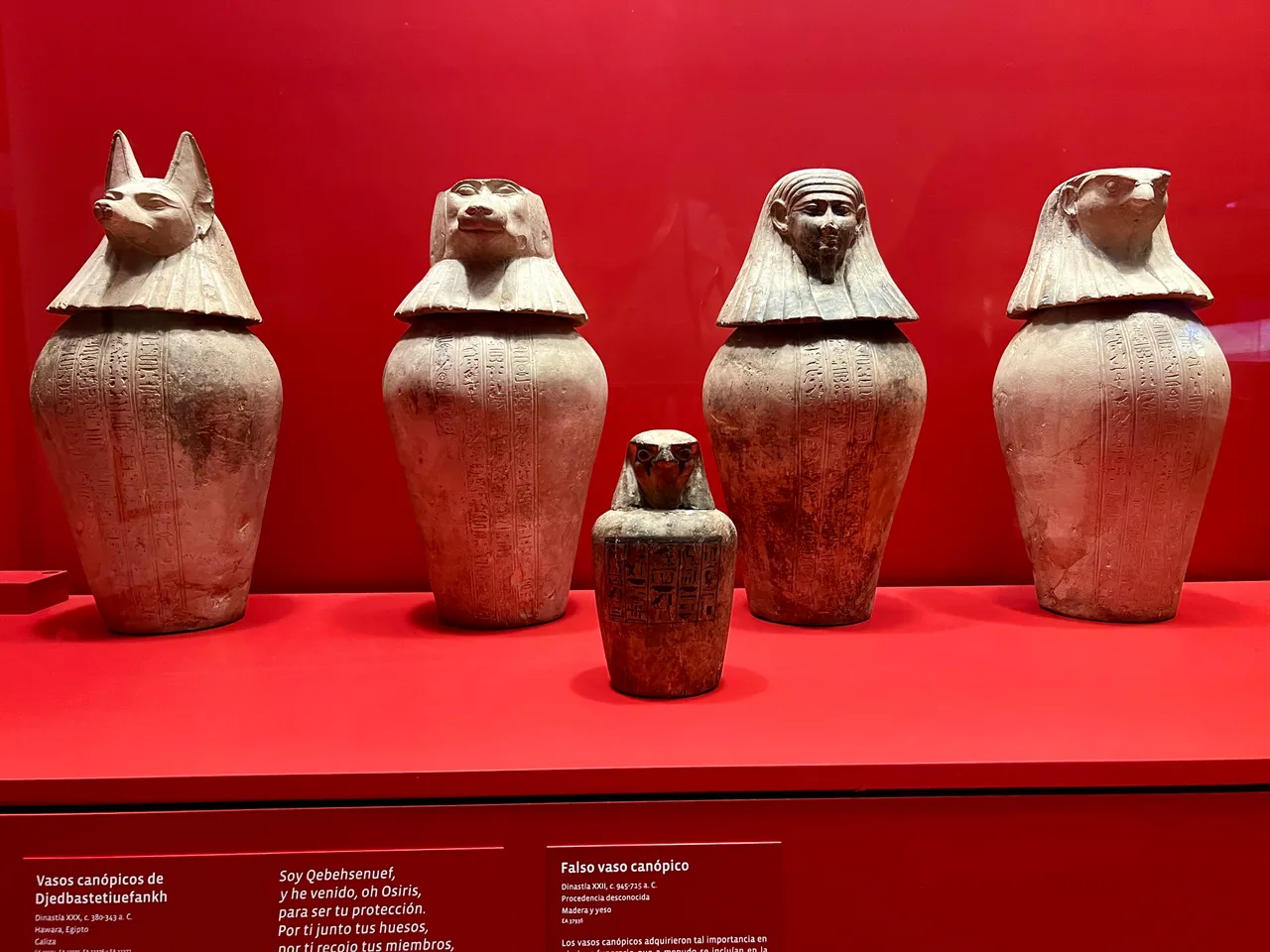
En esta sección se muestran los ritos funerarios y se explica el proceso de momificación de los cadáveres. También se podían ver piezas que aparecen habitualmente en las tumbas egipcias, como esa barca que acompañaba al difunto al más allá o los conocidos como vasos canópicos, que eran los recipientes en los que se depositaban sus vísceras.
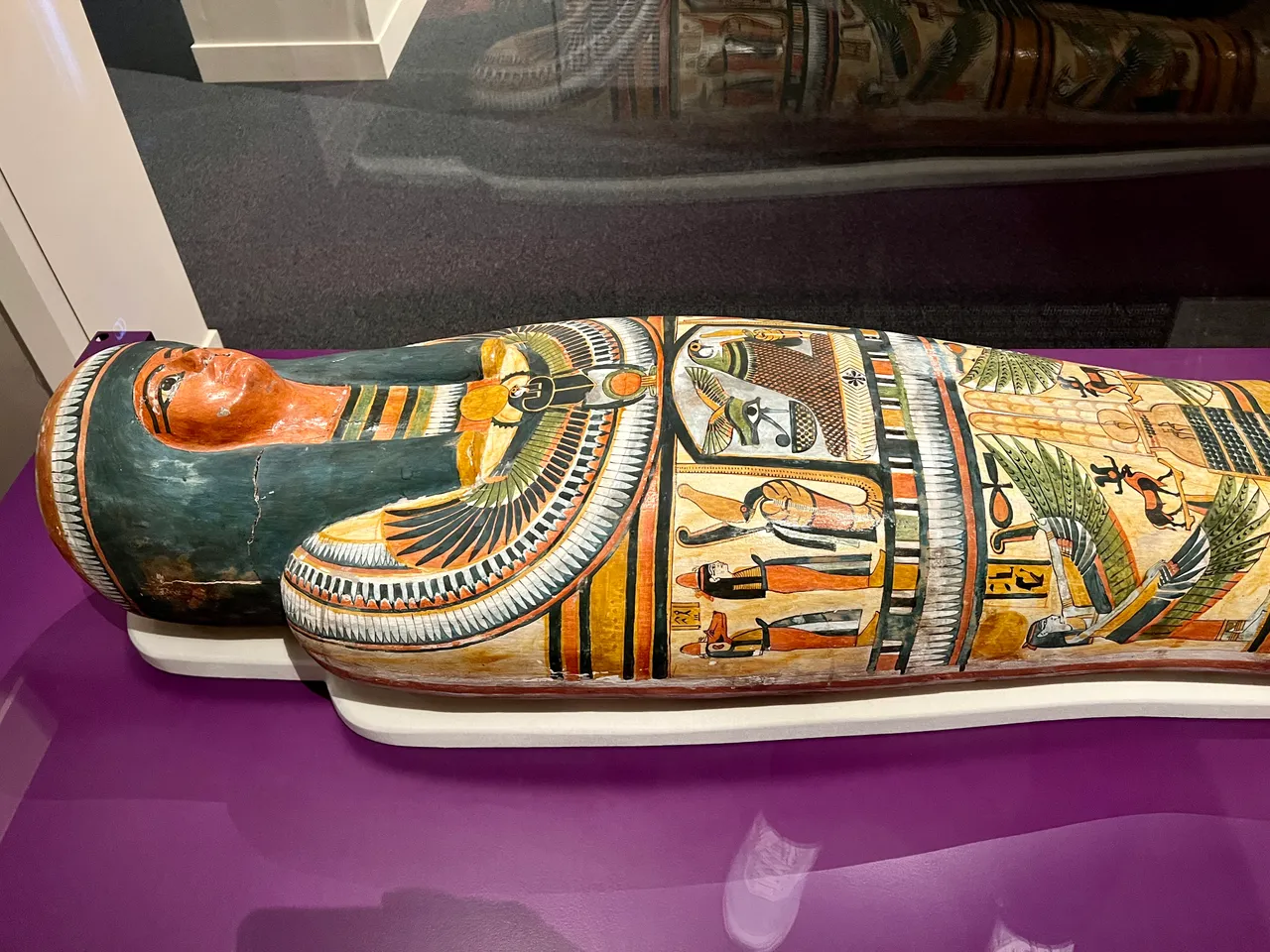
Cambiamos de momia. Nesperennub era un sacerdote del famoso complejo de templos de Karnak. Es más antigua que la anterior, de la Dinastía XXII alrededor del 800 a.C.
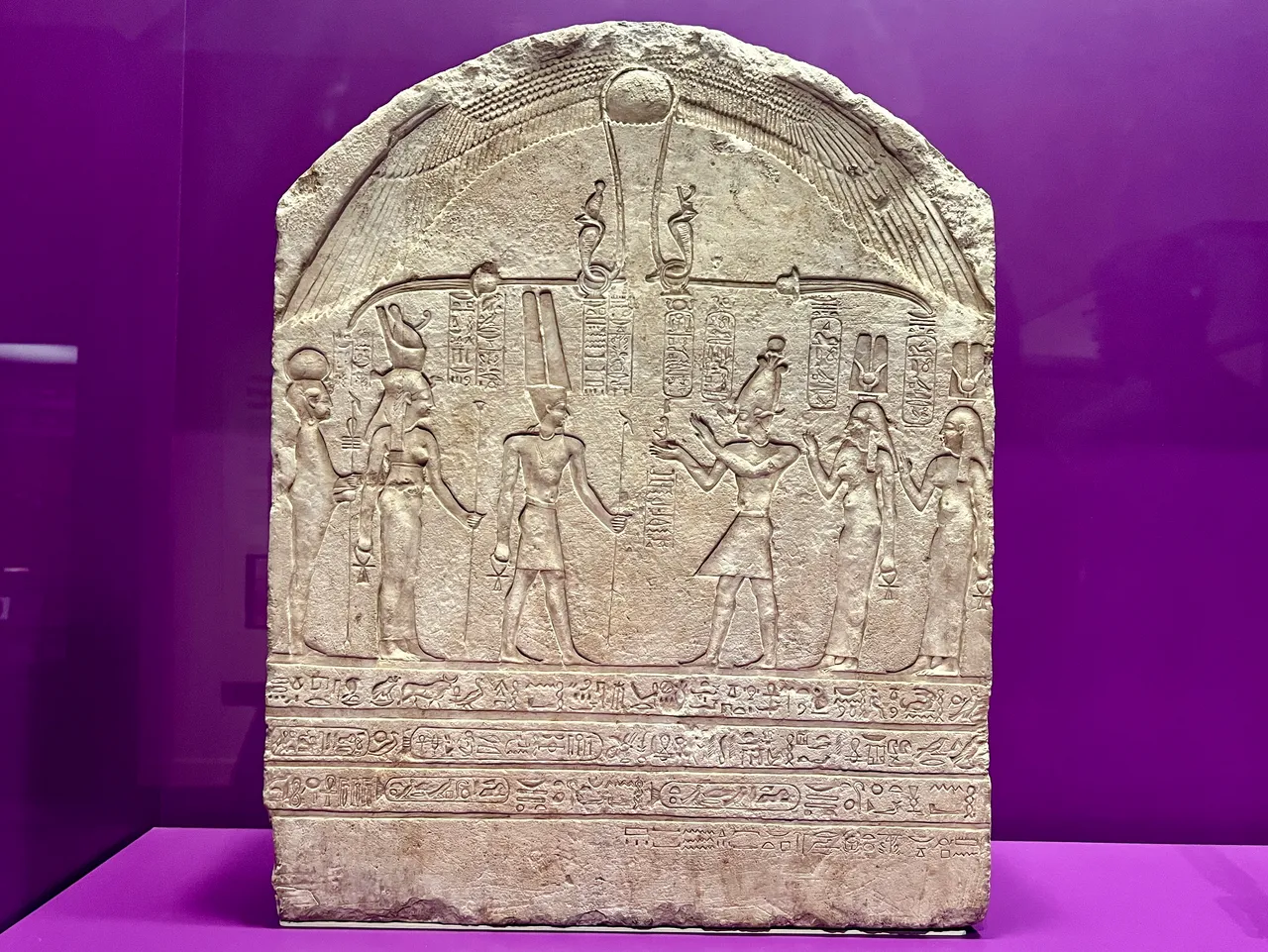
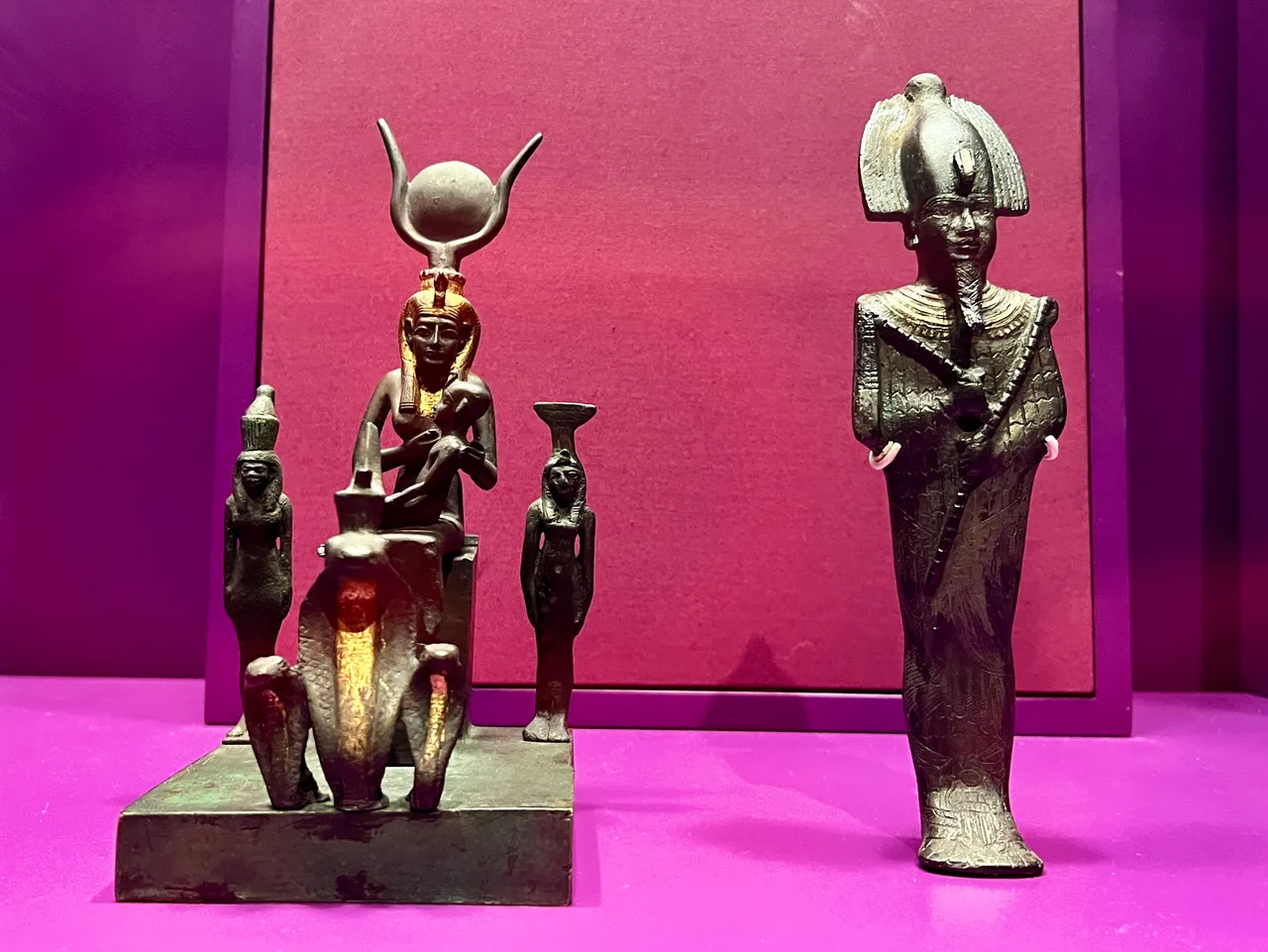
En este apartado se muestran los aspectos religiosos de los egipcios, las funciones que desempeñaban los sacerdotes y los distintos cultos que se profesaban en los templos.
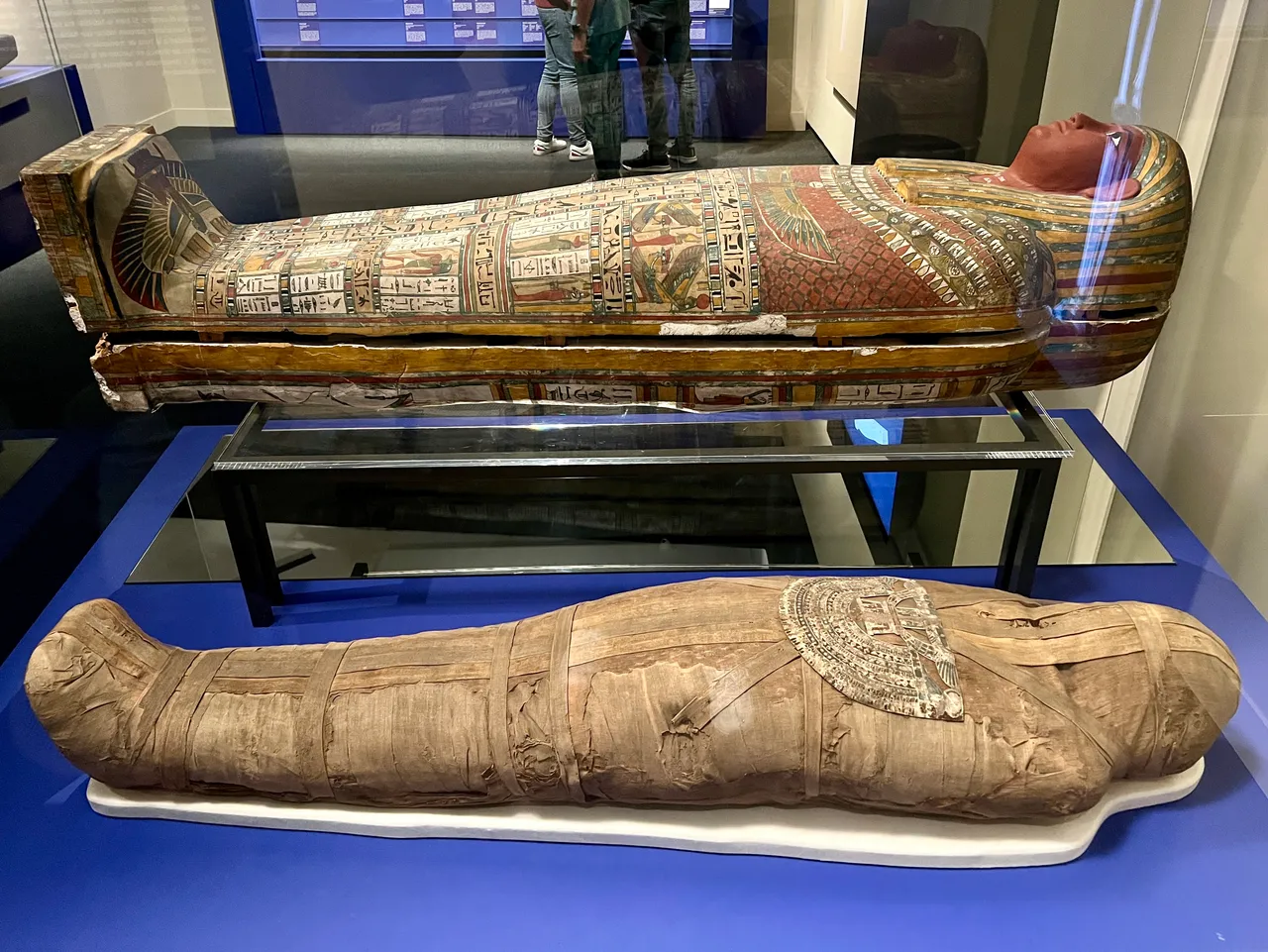
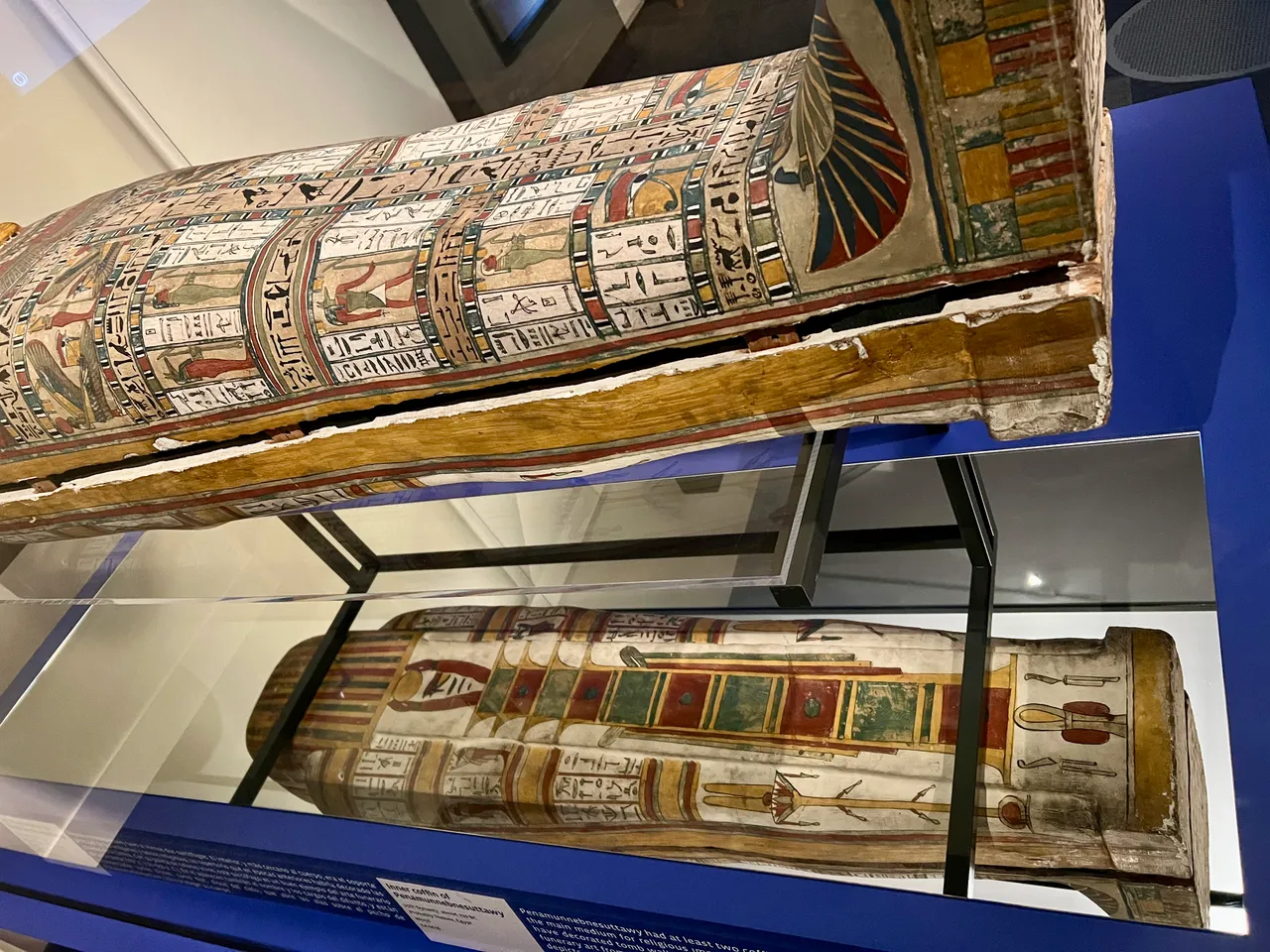
La tercera momia corresponde a Penamunnebnesuttawy, sacerdote de Amón, región situada más al norte que la anterior. Se le sitúa en la Dinastía XXV, sobre el 700 a. C.
En este caso asombra el espléndido estado de conservación de su sarcófago. Los colores parecían que se hubieran aplicado ayer mismo y los dibujos eran nítidos y perfectamente interpretables (para el que los sepa descifrar, claro.
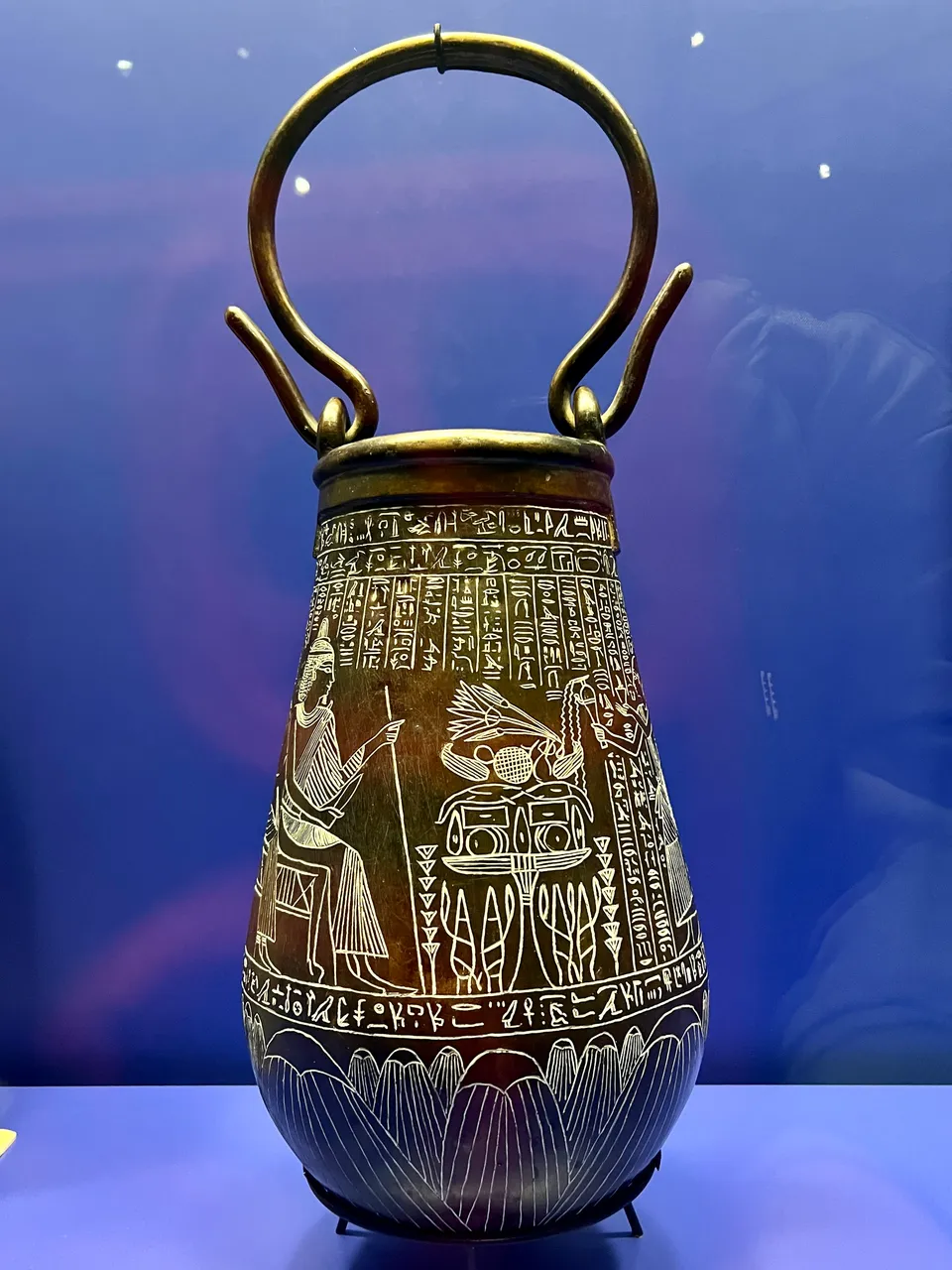
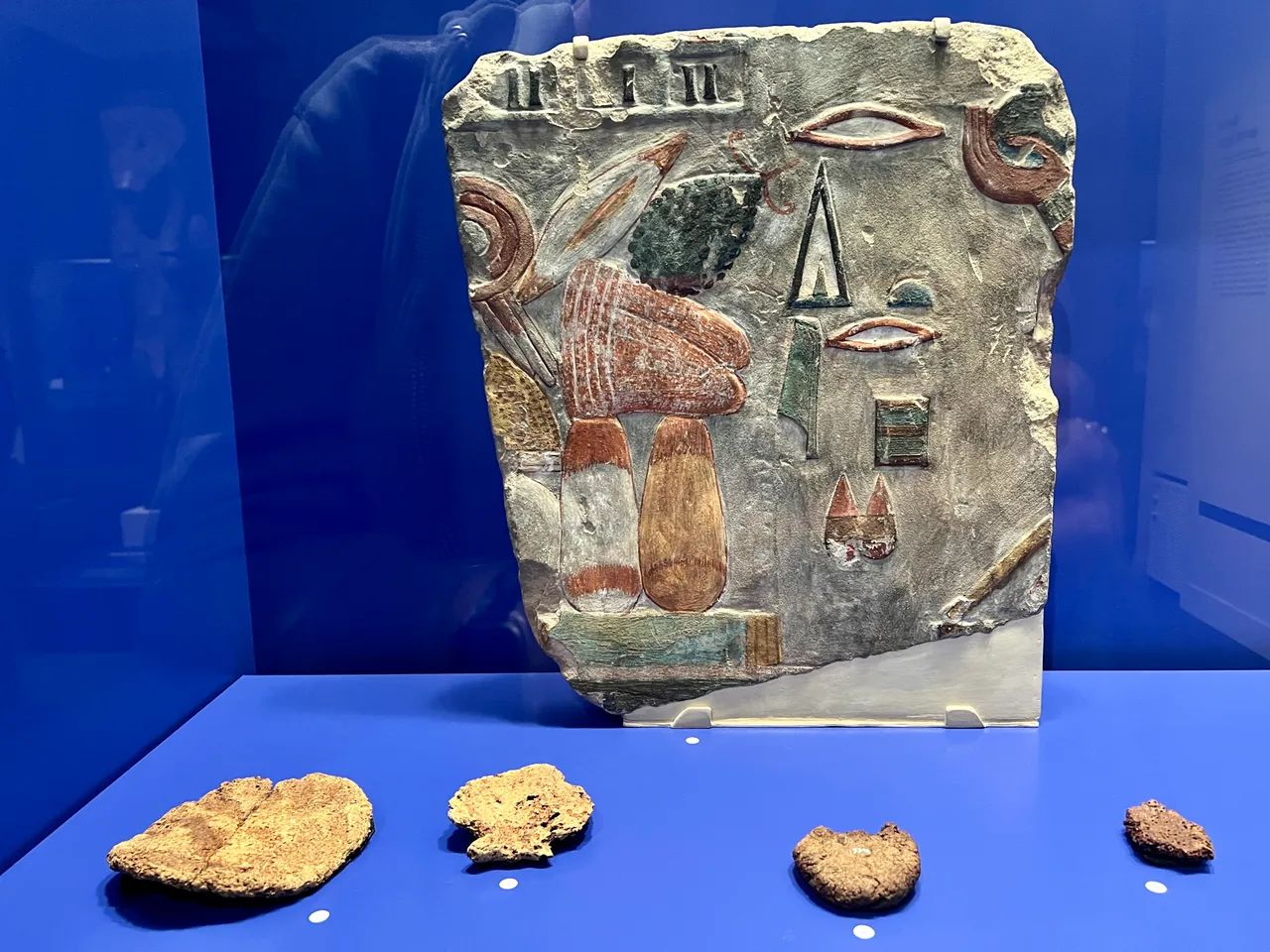
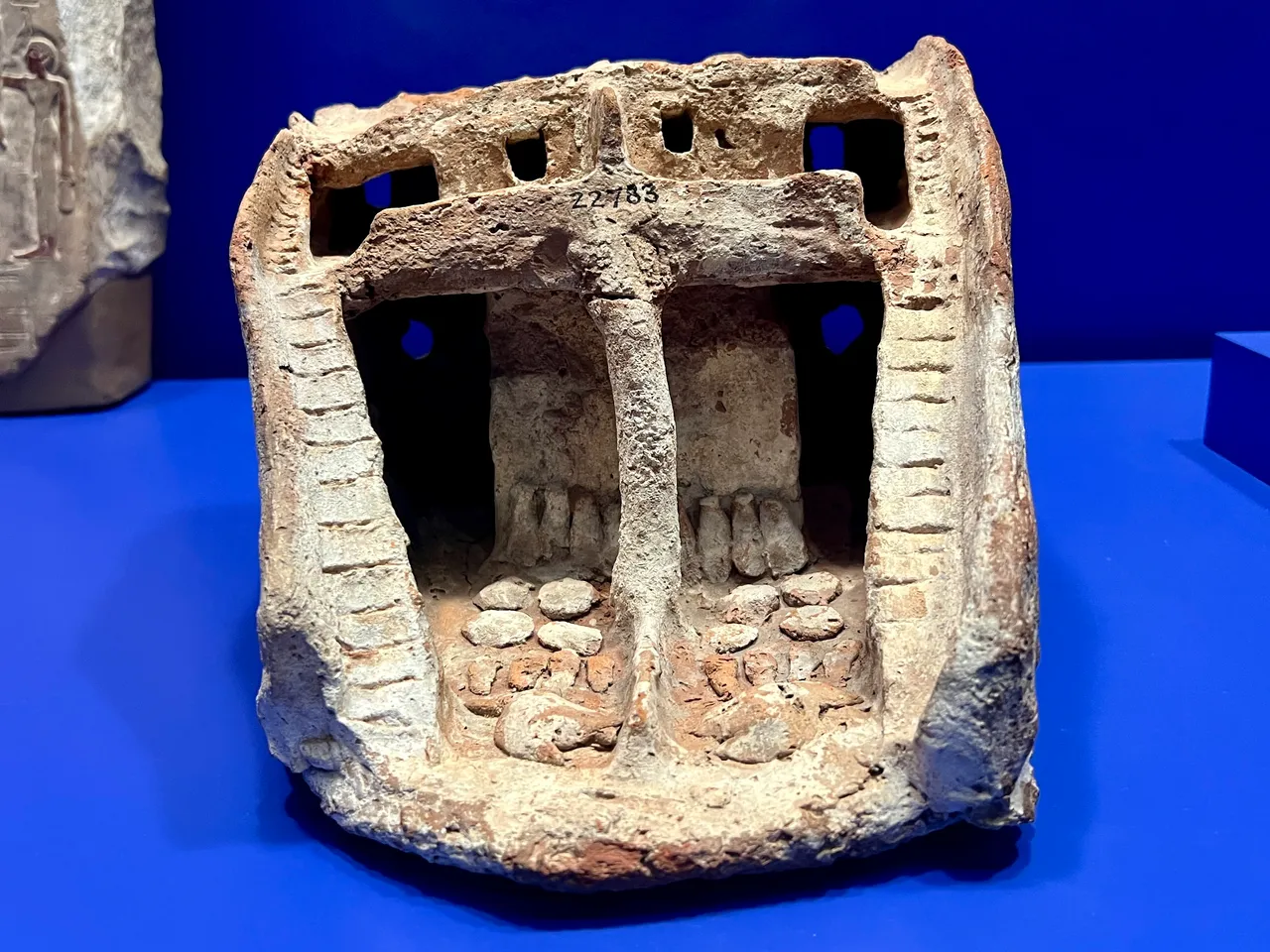
Junto a esta momia se exponían los objetos que se introducían en las tumbas como ofrendas. Gracias a ellos conocemos los alimentos que consumían (los trocitos que ves junto a la estela coloreada son restos originales de pan) o cómo eran sus casas (representadas a modo de maqueta en la imagen justo encima de este párrafo).
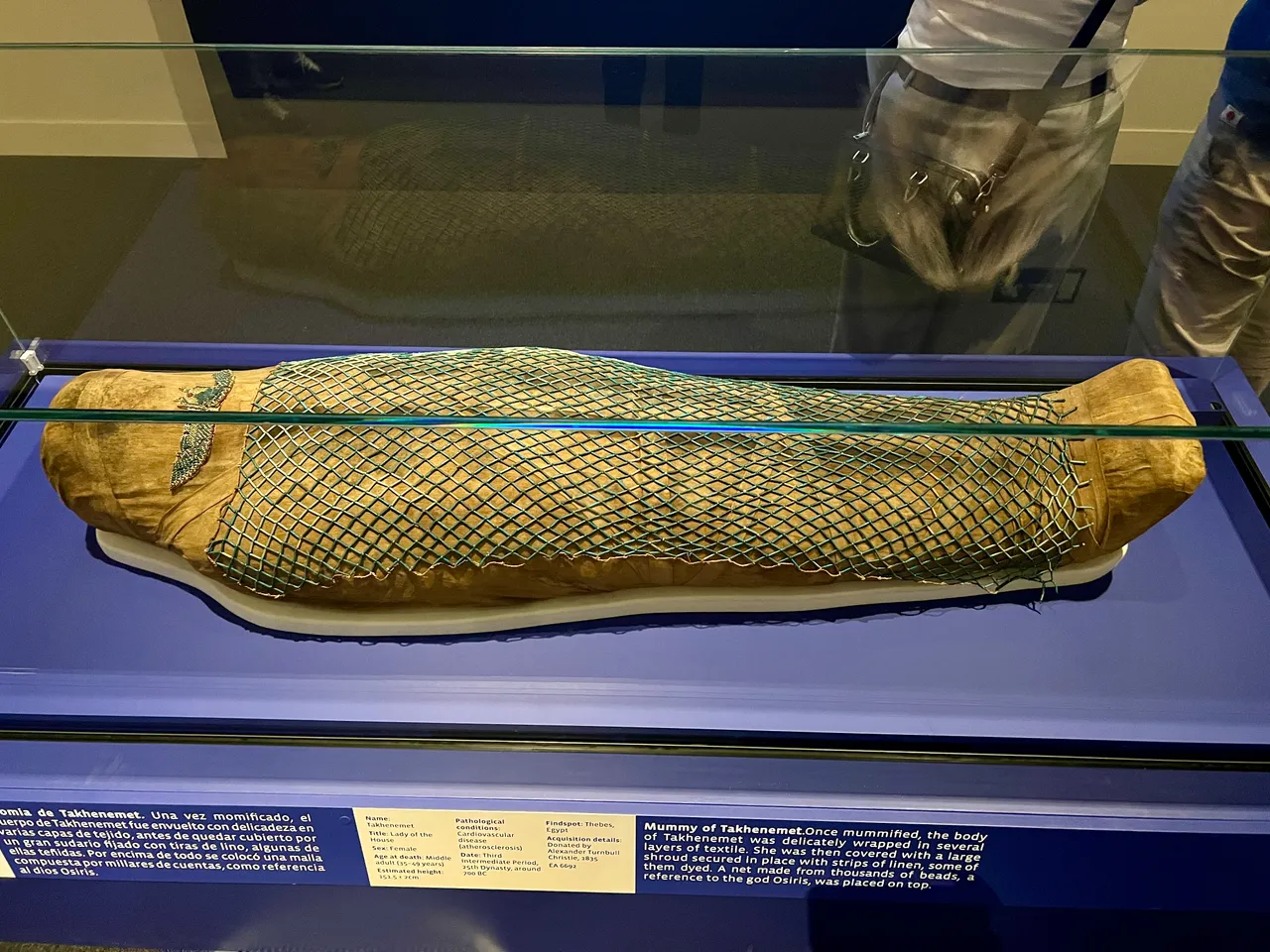
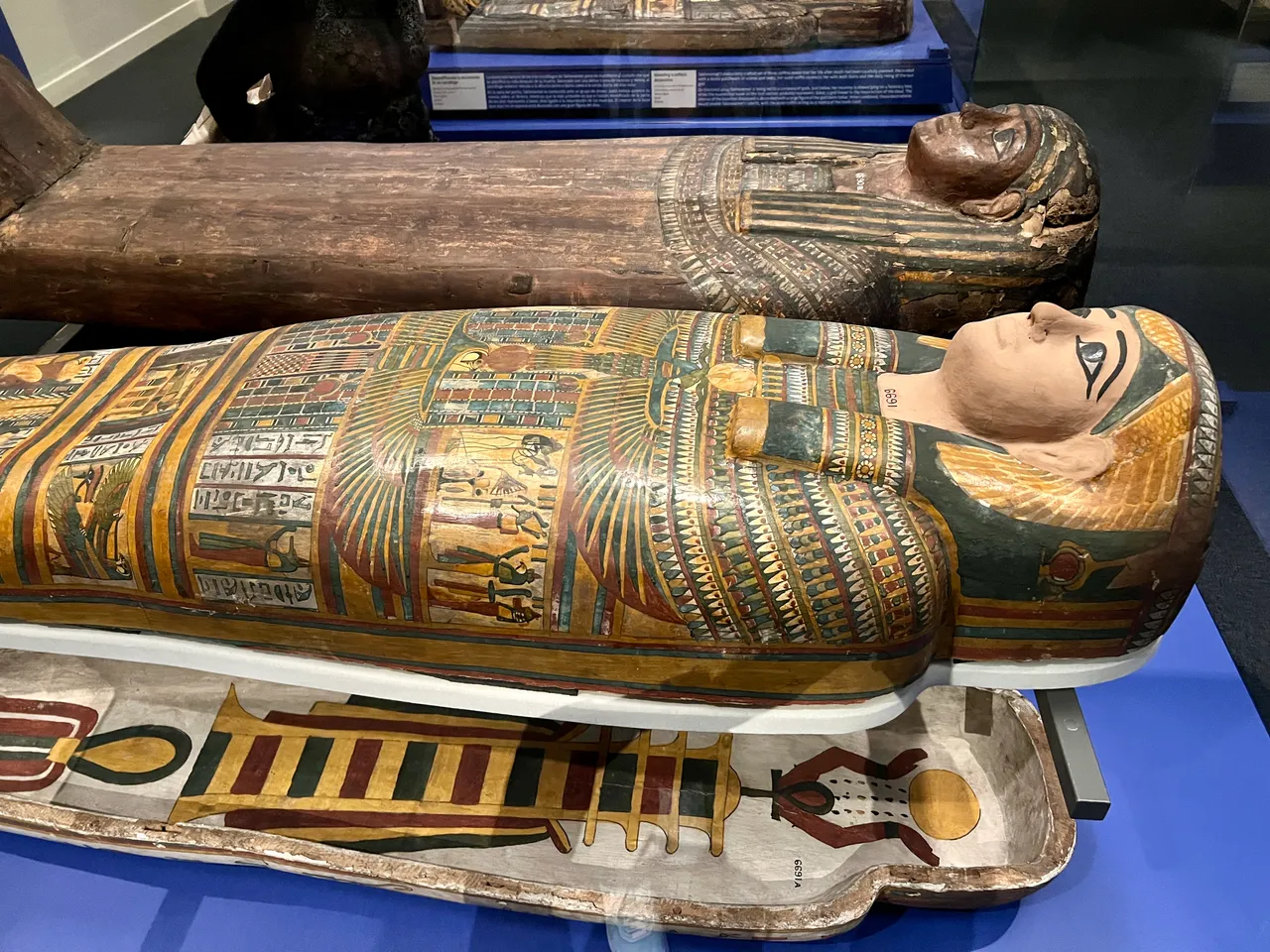
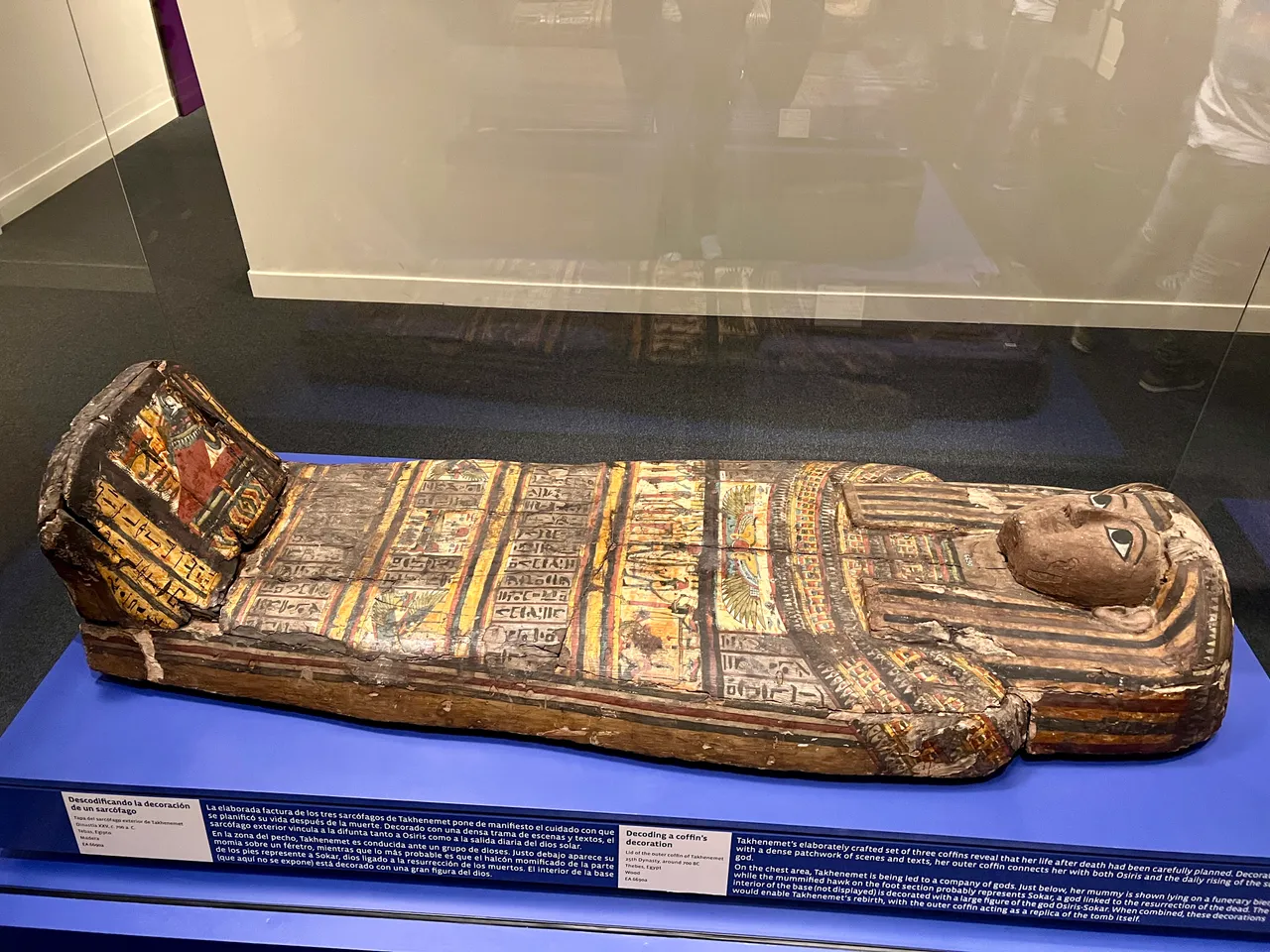
Llegamos a la única momia femenina de la exposición. Se llamaba Takhenemet y debió ser una dama adinerada. Se halló en Tebas y vivió durante la Dinastía XXV, sobre el 700 a. C.
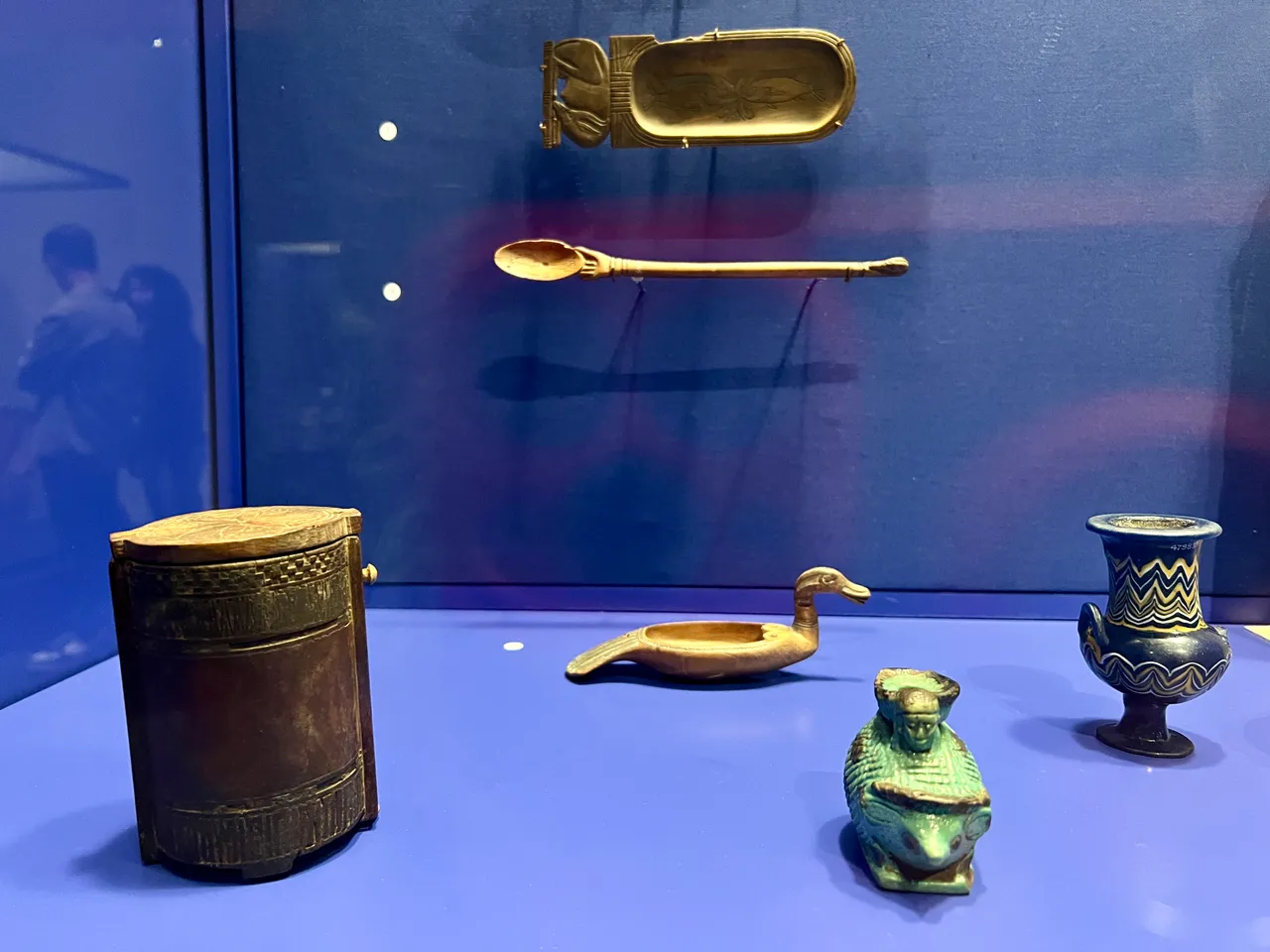
Su sección estaba dedicada al cuidado del cuerpo y a los adornos tanto estéticos como en forma de joyería. En la imagen superior se aprecia la variedad de recipientes y materiales que se usaban para guardar y aplicar los ungüentos.
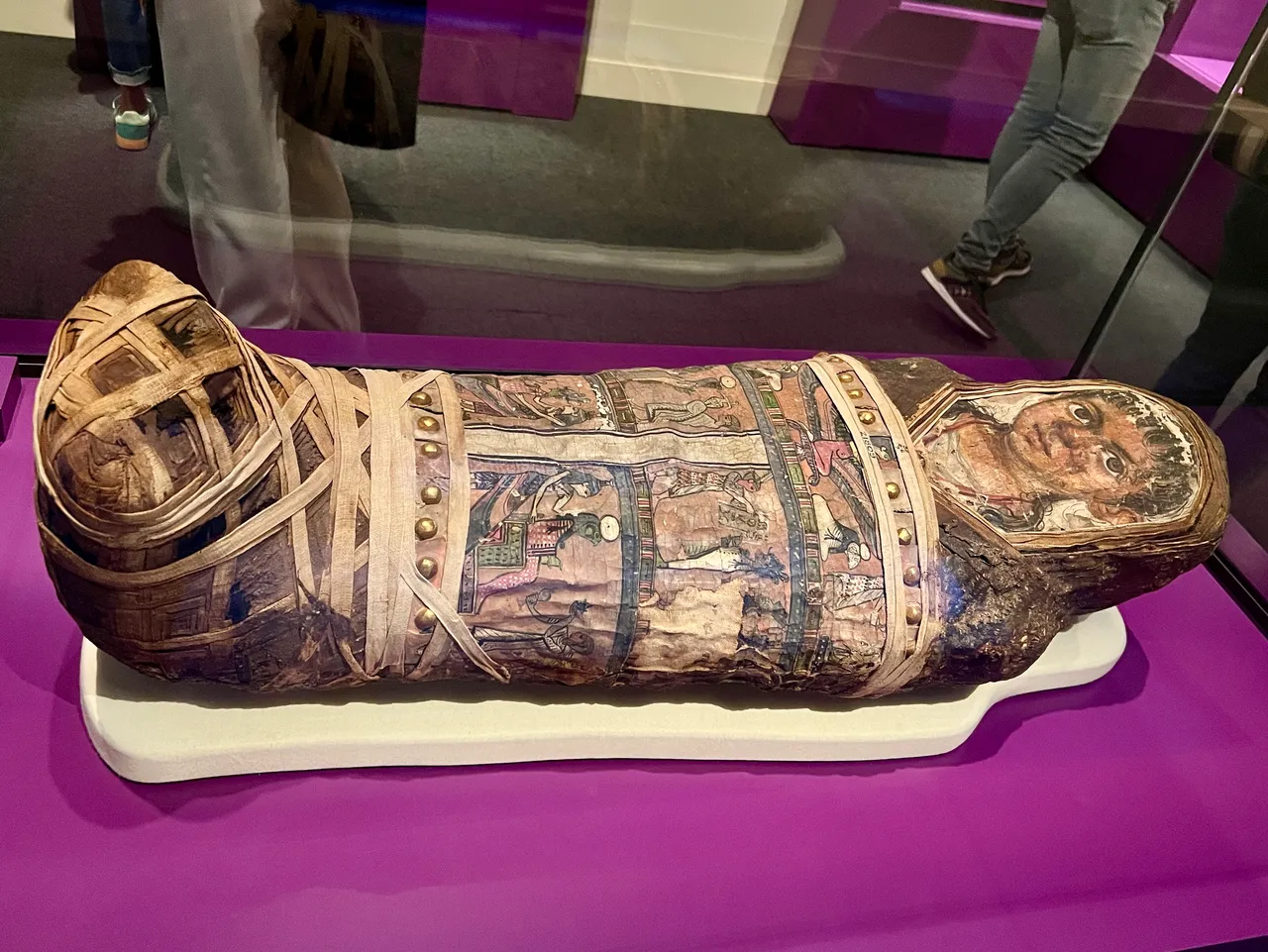
La momia infantil se desconoce a quién pertenece. Se estima que murió con unos cuatro años y no se detectaron enfermedades, por lo que pudo ser un accidente el que le causó el fatal desenlace. Es la momia más reciente de todas, perteneciente al Período Romano, durante el primer siglo d.C.
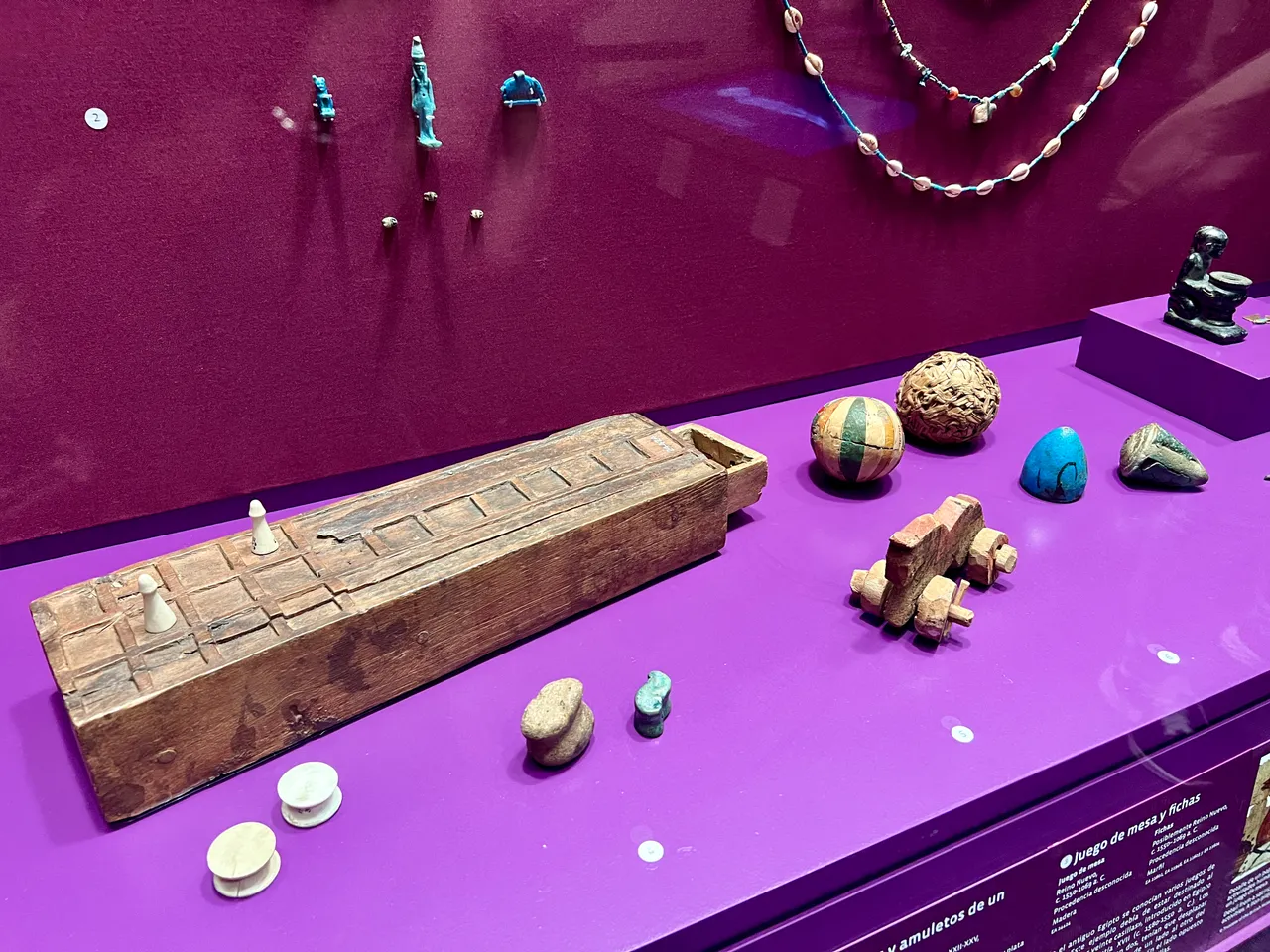
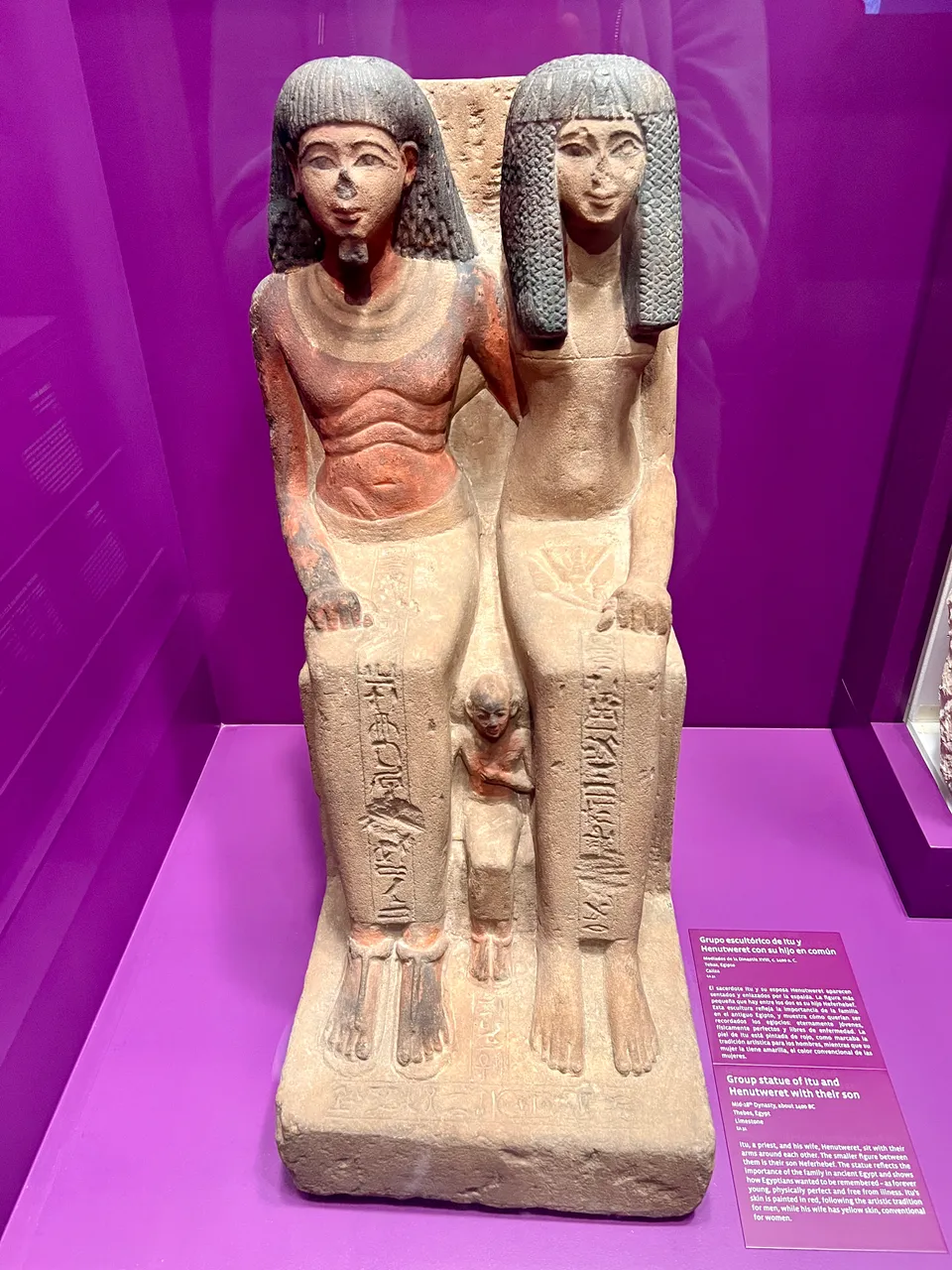
Las vitrinas exponían ejemplos de los juegos que usaban en la época, la mayoría similares a otros que podemos conocer en la actualidad.
También se aprovechaba para mostrar el papel de la familia en el Antiguo Egipto y qué papeles desempeñaba cada miembro a lo largo de la vida.
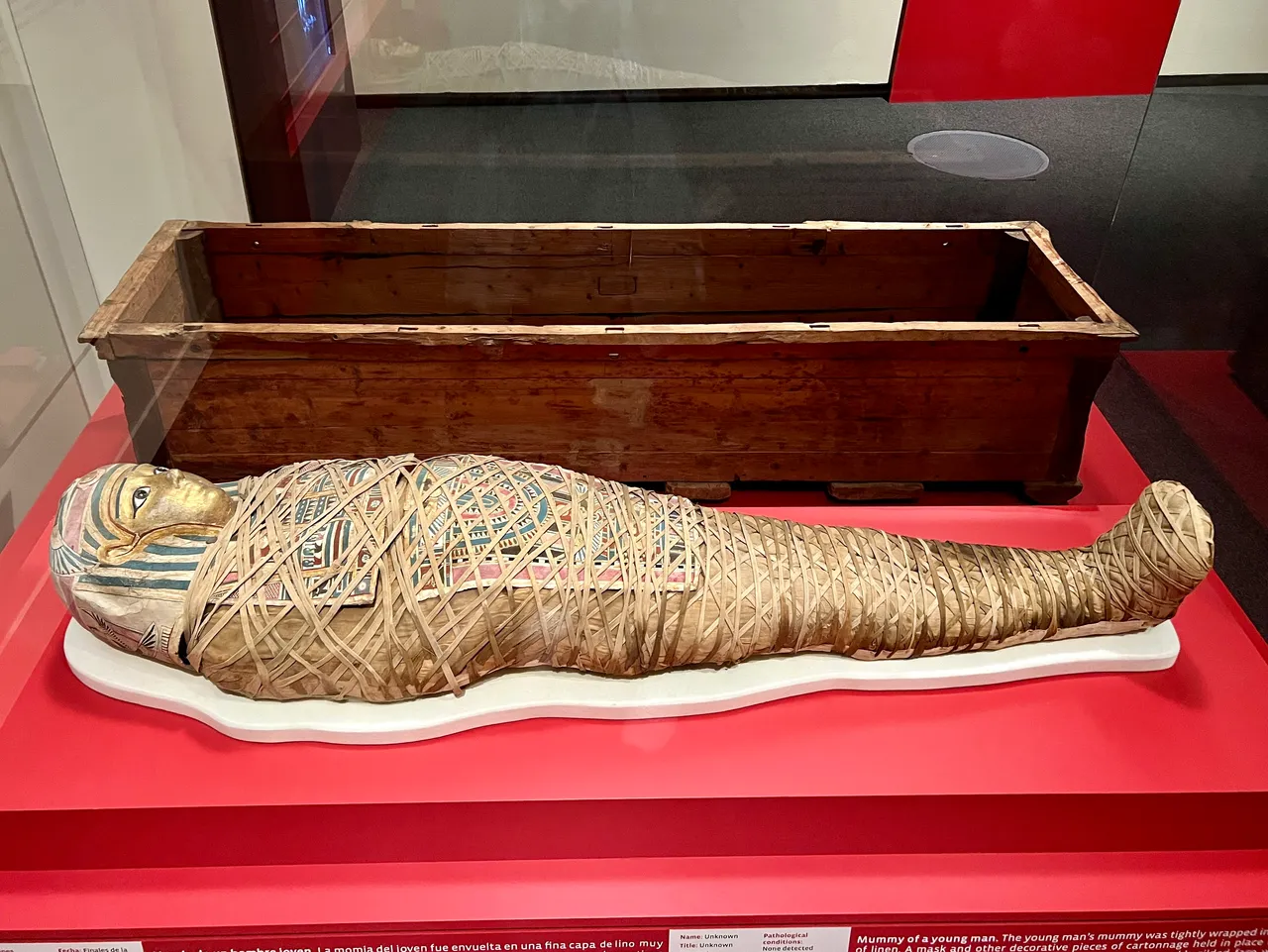
La sexta y última momia también se desconoce quién fue. Era un joven de unos 17-18 años y vivió más o menos en la época de la famosa Cleopatra, a finales de la Dinastía Ptolemaica o principios del Período Romano, alrededor del año cero cristiano.

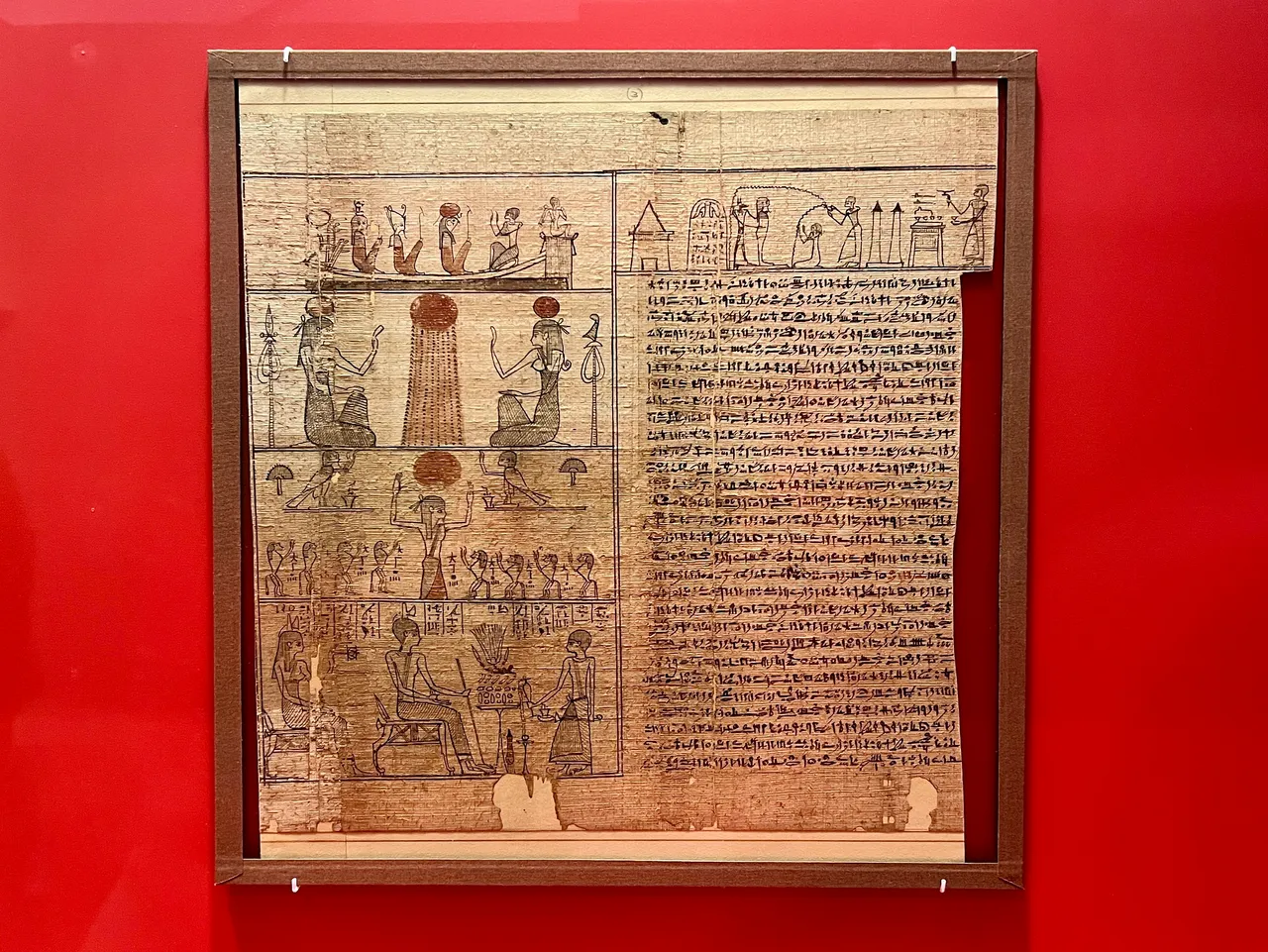
Acompañando a esta momia se exponían objetos variados de las épocas más tardías y cercanas a nuestra era. Se adivina un mayor detalle en las figuras y dibujos al tiempo que los materiales son más delicados, como madera en lugar de piedra.
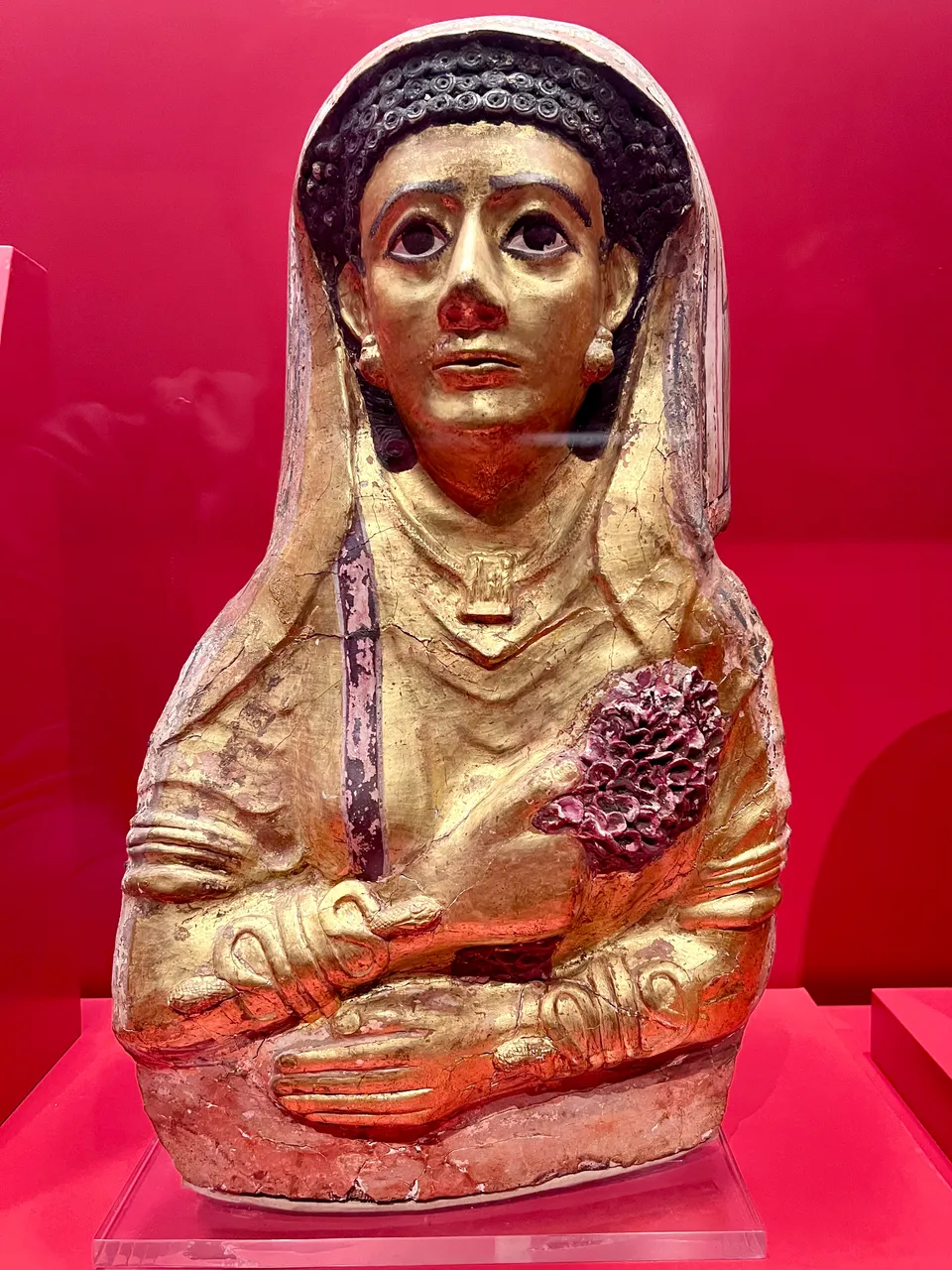
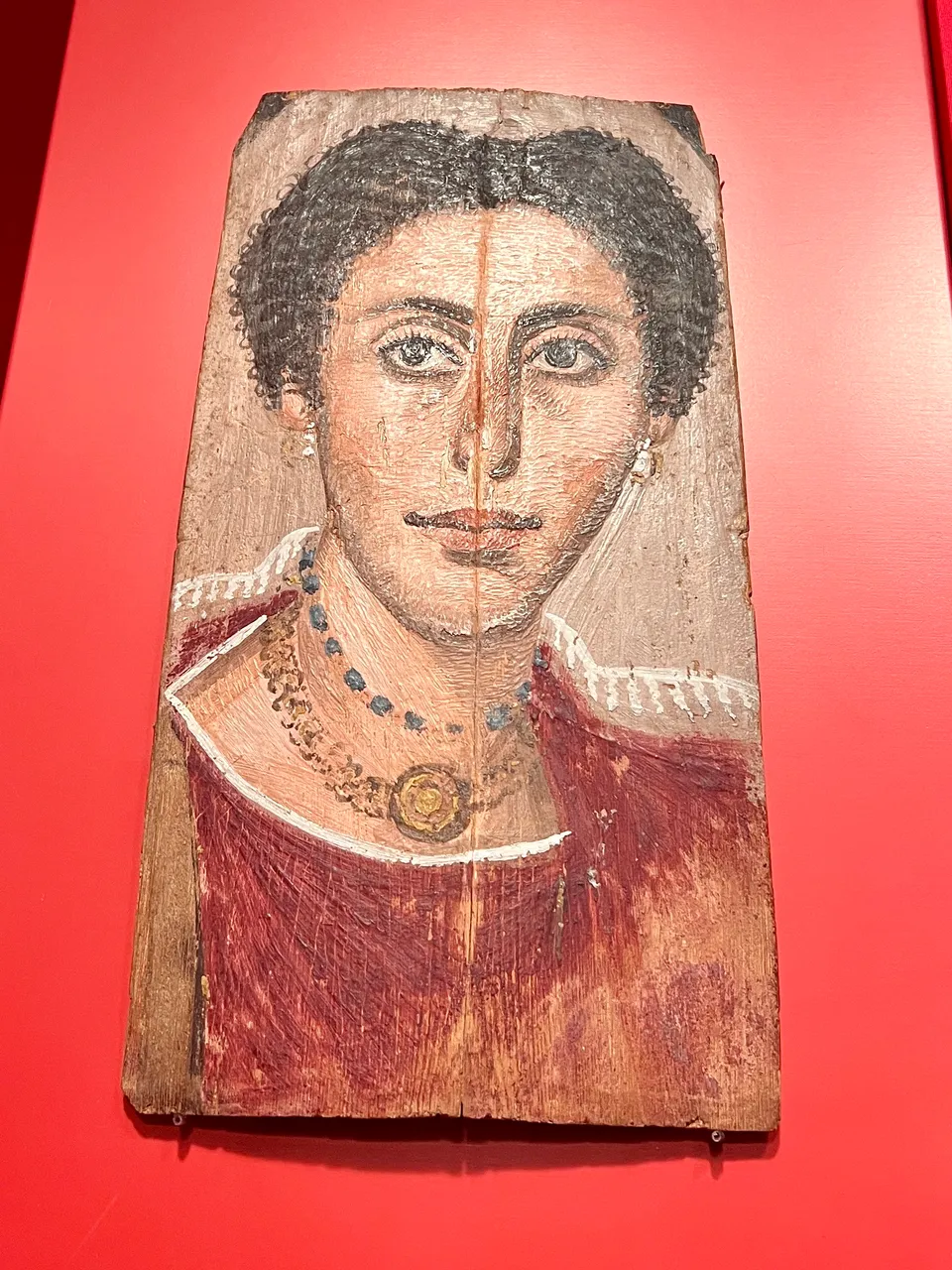
Era llamativo el cambio de presentación de los restos momificados. En los últimos siglos del Antiguo Egipto ya casi no se fabricaban sarcófagos y se sustituían por máscaras de yeso que se colocaban directamente sobre las momias, o por retratos pintados en madera que alcanzaban un gran realismo.
Hasta la próxima publicación. Mientras tanto, ¡cuídate!

Herramientas: Cámara iPhone 13 Pro, editor de fotos Mac.
Si te gusta lo que publico, únete a mi Fanbase pinchando aquí

©️Copyright 2024 Paloma Peña Pérez. Todos los derechos reservados.



Hi, dear hiver.
Ancient Egypt is a civilisation that many of us admire. I have always been fascinated by its hieroglyphics, profile portraits and, of course.... its mummies! So, as soon as I heard about the exhibition at the CaixaForum Museum in my city, I went there with a friend to spend a nice afternoon.

To sum up, this is what we will see: six mummified bodies from different periods and social classes of Egyptian civilisation. They serve as a basis for learning about their rites and customs, how they lived and even how they fell ill and died.
The pieces are the property of the British Museum, almost all of them were authentic and therefore protected by glass. The information I present here was taken from the information panels along the exhibition route.


The first of the mummies corresponds to Ameniryirt, an official of Thebes. This is known from the inscriptions on his three sarcophagi, which allow us to place him in the 26th Dynasty, around 600 BC.
Radiological examination of the body by Computed Tomography (hereafter CT) indicates that it remains in an excellent state of preservation, thus confirming that he was a man of influence and belonging to the upper classes.


This section shows the funerary rites and explains the process of mummification of the corpses. It is also possible to see pieces that usually appear in Egyptian tombs, such as the boat that accompanied the deceased to the afterlife or the so-called canopic vessels, which were the containers in which their viscera were deposited.

We change mummies. Nesperennub was a priest of the famous temple complex of Karnak. It is older than the previous one, from the 22nd Dynasty around 800 BC.


This section shows the religious aspects of the Egyptians, the functions performed by the priests and the different cults professed in the temples.


The third mummy is that of Penamunnebnesuttawy, a priest of Amun, a region further north than the previous one. He is dated to the 25th Dynasty, around 700 BC.
In this case, the splendid state of preservation of his sarcophagus is astonishing. The colours looked as if they had been applied just yesterday and the drawings were clear and perfectly interpretable (for those who know how to decipher them, of course).



Alongside this mummy, the objects that were placed in the tombs as offerings were exhibited. Thanks to them we know the food they ate (the little pieces you see next to the coloured stele are the original remains of bread) or what their houses were like (represented as a model in the image just above this paragraph).



We come to the only female mummy in the exhibition. Her name was Takhenemet and she must have been a wealthy lady. She was found in Thebes and lived during the 25th Dynasty, around 700 BC.

Her section was devoted to body care and adornment, both aesthetic and in the form of jewellery. The image above shows the variety of vessels and materials used to store and apply ointments.

The infant mummy is not known to whom it belongs. It is estimated that he died when he was about four years old and no diseases were detected, so it could have been an accident that caused his fatal outcome. It is the most recent mummy of all, belonging to the Roman Period, during the first century AD.


The showcases displayed examples of the games they used at the time, most of them similar to others we know today.
It was also used to show the role of the family in Ancient Egypt and what roles each member played throughout life.

The sixth and final mummy is also unknown. He was a young man of about 17-18 years old and lived around the time of the famous Cleopatra, from the late Ptolemaic or early Roman Period, around the year zero Christian.


Accompanying this mummy were a variety of objects from later periods and nearer to our era. The figures and drawings are more detailed and the materials used are more delicate, such as wood instead of stone.


The change in the presentation of mummified remains was striking. In the last centuries of Ancient Egypt, sarcophagi were rarely made and were replaced by plaster masks that were placed directly over the mummies, or by portraits painted on wood that achieved great realism.
Until the next post. In the meantime, take care!

Tools: iPhone 13 Pro camera, Mac photo editor.
Translated with DeepL
If you like my content, join my Fanbase clicking here

©️Copyright 2024 Paloma Peña Pérez. All rights reserved.


